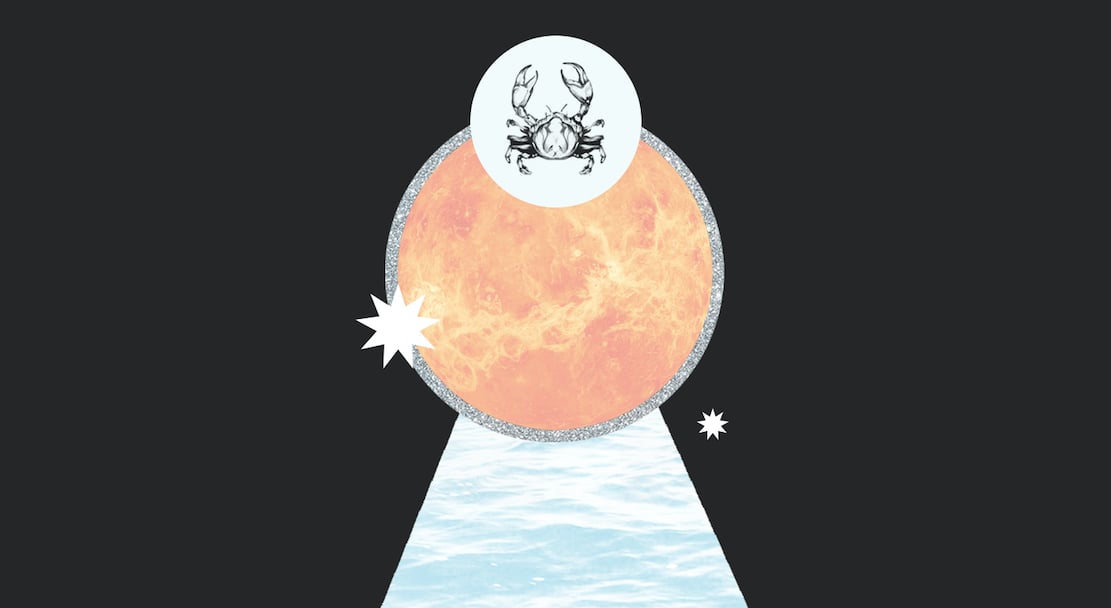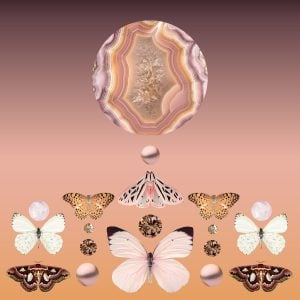The Three Decans of Cancer: Which One Are You?

Long before a twelve-fold division of the sky was introduced by the Babylonians, the Egyptians closely followed the stars that rose every ten days over the course of the year. The Babylonians later linked these stars with the zodiac. Next, the Greeks integrated these ten-degree segments into their system as decans, from the Greek word for the number ten. One of the early uses for the decans was in constructing amulets to protect from illness, a medical and magical treatment which continued into the Renaissance and early 20th century, where the decans were eventually re-imagined as the minor arcana images of the Tarot.
One of the primary ways of interpreting the decans is through the planetary ruler associated with it. The most well-known system uses the heptazone or Chaldean order of the planets, which is based on their relative speed as they move through the zodiac (Saturn is slowest, then Jupiter, Mars, the sun, Venus, Mercury, and the moon). Beginning with Mars in the first decan of Aries, we proceed to the sun, Venus, etc., and after the moon, we start back at Saturn and begin again.
Within this system, the three decans of Cancer are ruled by Venus, Mercury, and the moon.
The First Decan of Cancer (June 21–July 1)
Beginning with the summer solstice at 0° Cancer and spanning the next ten degrees is a decan associated with Venus, goddess of love and fertility. This is very appropriate, as midsummer is associated with both vegetal and human fertility around the world. For the unwed, there are traditions of using this time for rituals to help dream up future partners. It has been theorized that one of the major uses of Stonehenge was for solstice rituals centering on the cycle of conception—the stone circle representing the womb—through penetration by the masculine rays of the sun. This makes practical sense as babies conceived at this time would be born in the spring when the land was capable of supporting them again.
The rulership of Venus shows up in the Tarot image related to this decan as well. The first decan of a cardinal sign is related to the number two card of that element—in this case, the Two of Cups. Many. Tarot practitioners use the Two of Cups as another version of The Lovers trope. In most Tarot images, the two of cups has a caduceus and angel rising from between the two people, symbolizing the higher consciousness that is born from a true merging of opposites.
The Second Decan of Cancer (July 2–12)
Spanning at 10-20° of Cancer, this decan is associated with Mercury, the god of language, symbol, liminality, and exchange. The ancient god of commerce’s influence on a fruitful sign like Cancer brings abundance, and it is no accident that the United States of America—whose national holiday falls in this decan—has one of the largest and most productive economies in the world. Mercury’s influence here also brings a sweetness of voice and the ability to put others at ease.
The second decan of a cardinal sign is related to the number three card of that element—in this case, the Three of Cups. This Tarot card is often pictured as three maidens frolicking in an abundant garden, pledging or toasting to each other with their cups held high in a gesture or mutual support and solidarity. Tarot reader Robert Place notes that these three women may be suggestive of the Triple Goddess, the Three Fates, or perhaps even the three stages of transformation in alchemy (nigredo or blackening, albedo or whitening, and rubedo or reddening).
The Third Decan of Cancer (July 13–22)
From 20-30° of Cancer we have a decan ruled by the moon, who also the traditional ruler of the entire sign. Here, the moon’s influence takes on an even more profound significance. The natural fruitfulness of the sign reaches a height in the third decan and provides us with even more than our practical needs. Luxurious bounty exudes from these degrees, but so does the possibility of scarcity through overindulgence, unless the excess can be successfully saved or stored away in preparation for leaner times.
The third decan of a cardinal sign is related to the number four card of that element—in this case, the Four of Cups. In the traditional image for this card, we see a man being offered an extra cup from “out of the blue.” It seems the man either doesn’t notice or refuses this cup. This may symbolize an unexpected surplus that we either can’t use or may in fact not be good for us (as in, I had one too many drinks last night.) In the Alchemical Tarot, Robert Place suggests that four represents stability and solidity and so this card represents the trap of success and contains a warning not to become complacent and stop growing.
References and recommended reading: Ancient Astrology In Theory and Practice by Demetra George, Rubedo Press 36 Faces by Austin Coppock, Three Hands Press The Tarot by Robert Place, Magic, Alchemy, Hermeticism and Neoplatonism, Hermes Publications
Gary P. Caton is a transdisciplinary astrologer who maintains an active sacred relationship with the living Sky as his temple. Initiated an astrologer by a magnificent dream in 1993, Gary is the author of Hermetica Triptycha: The Mercury Elemental Year, and host of the popular Hermetic Astrology Podcast. Find Gary online at DreamAstrologer.com
Art by Mohamed Sobeha
Explore Tarot today. Get a FREE live reading with an expert.



